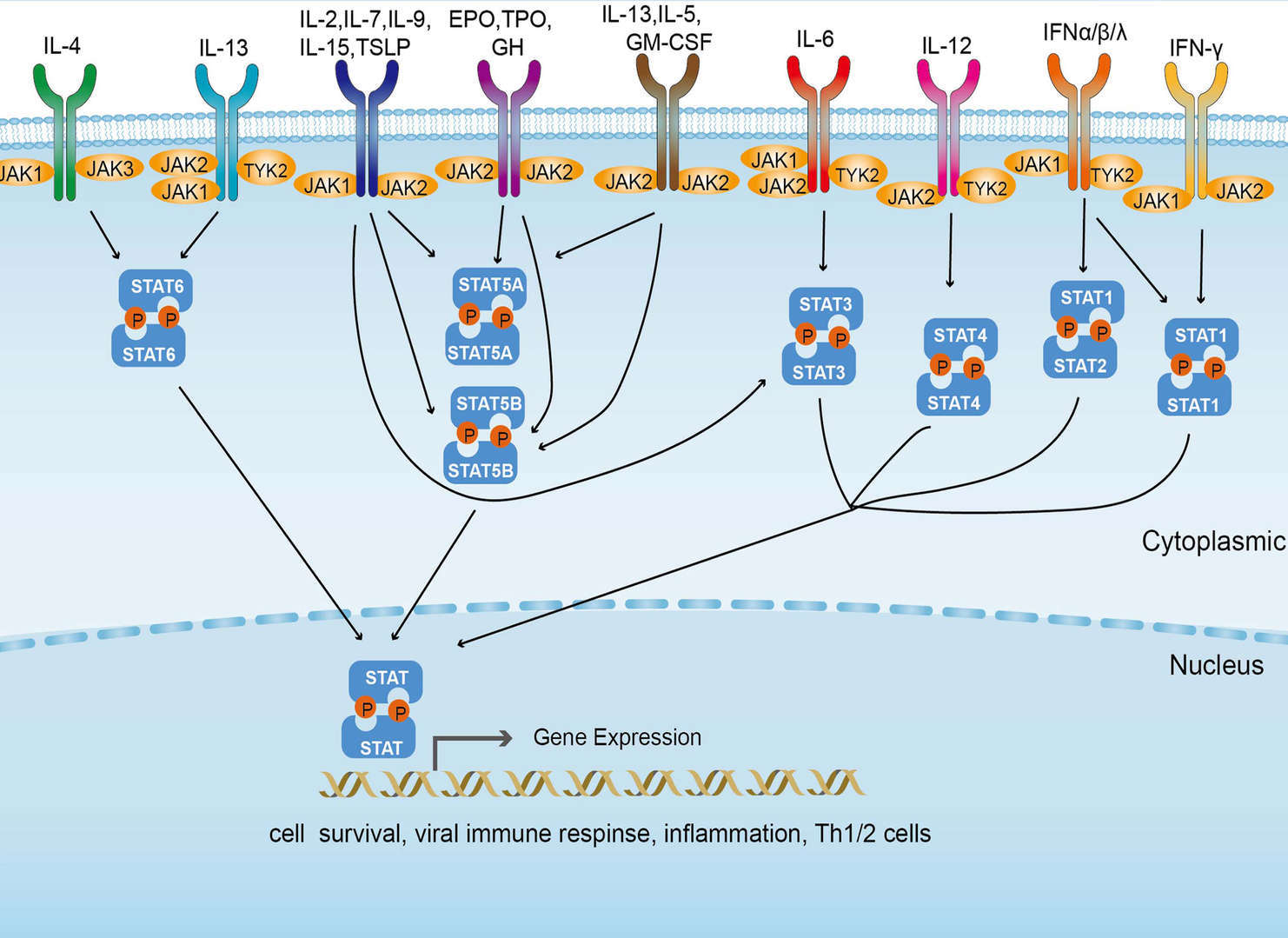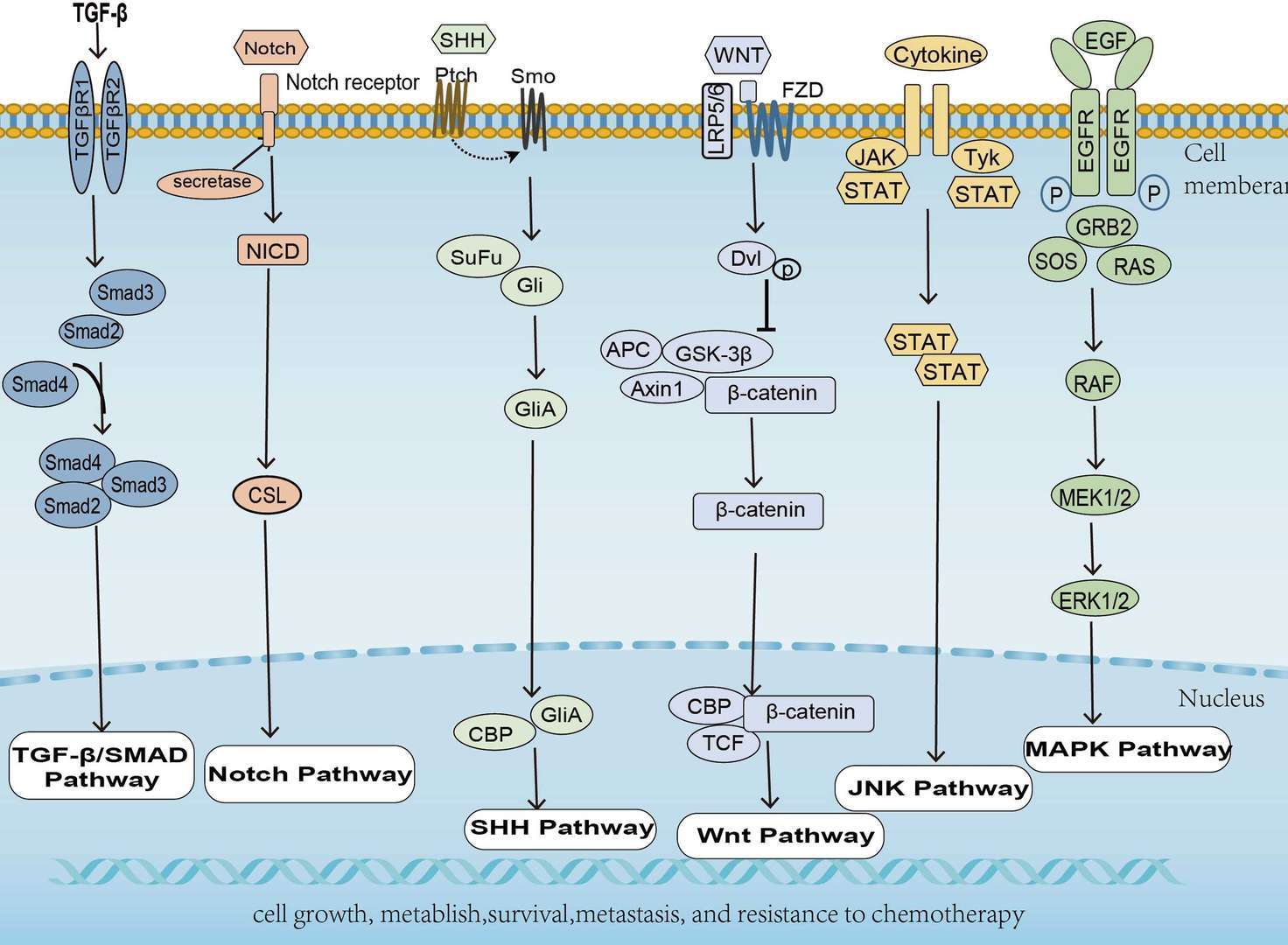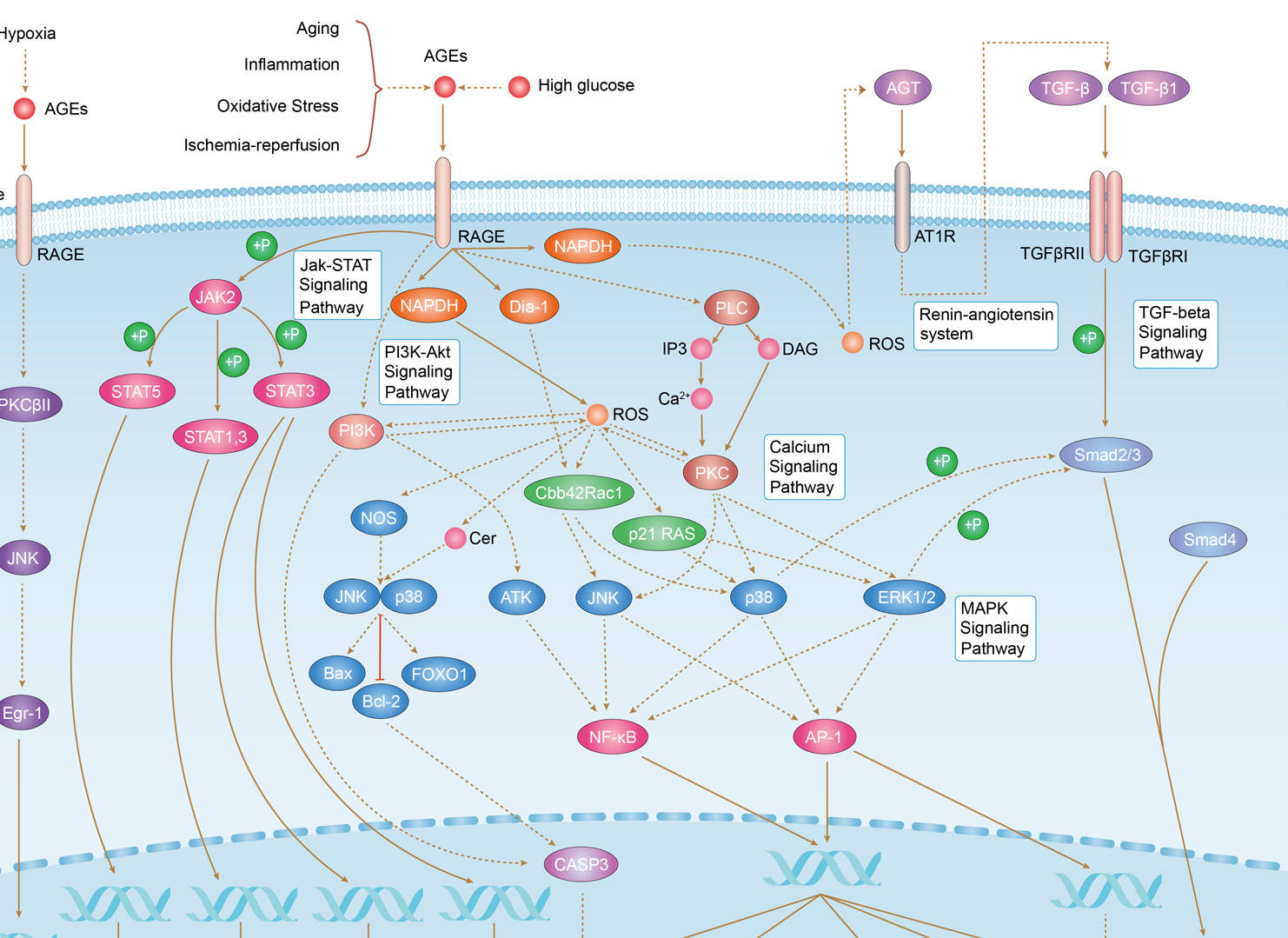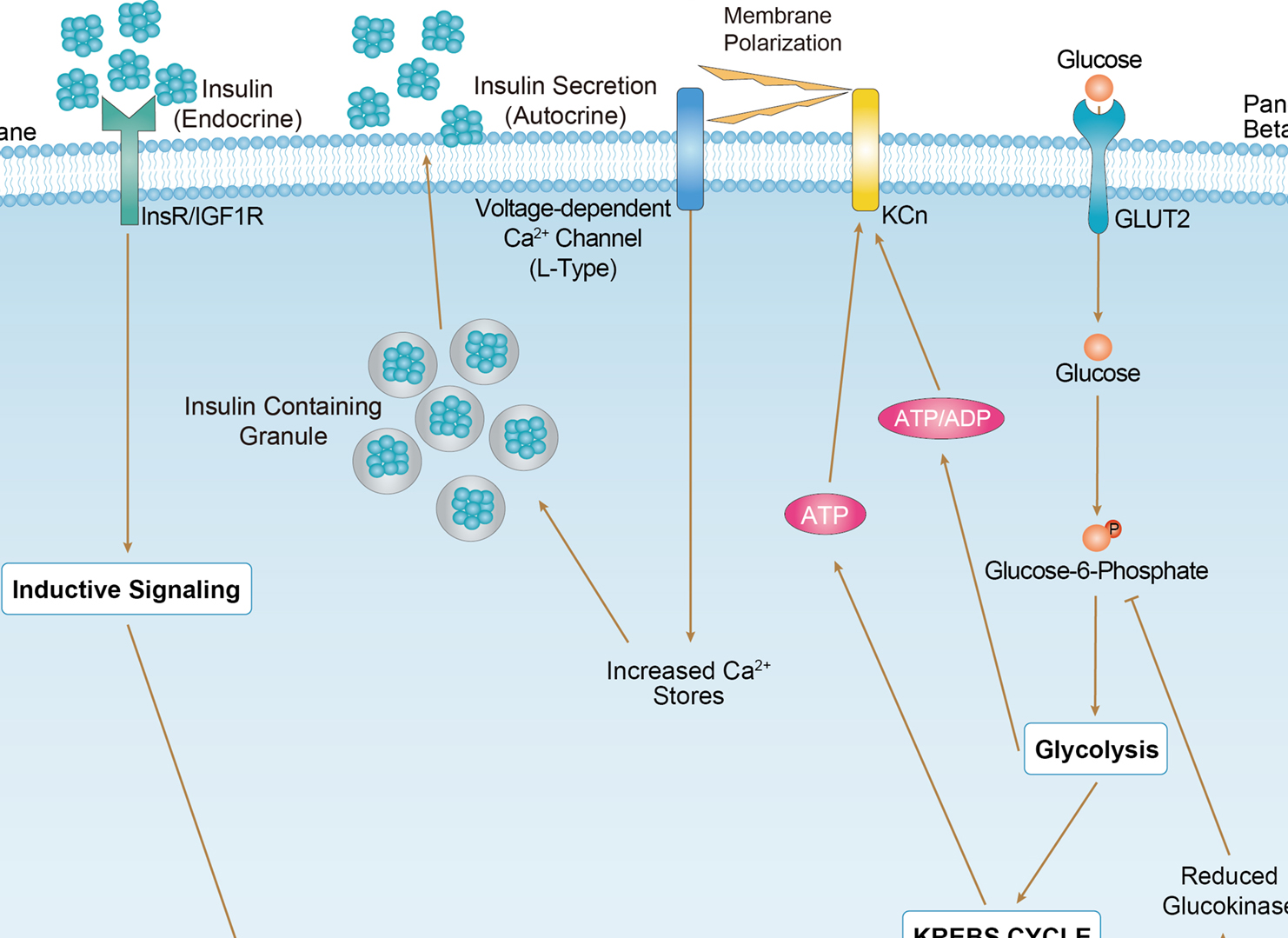Rabbit Anti-JAK2 Recombinant Antibody (VS3-CJ157)
CAT#: VS3-CJ157
This product is a rabbit antibody that recognizes Phospho-JAK2 (Y1007+Y1008).









Specifications
- Immunogen
- KLH-conjugated synthetic peptide
- Host Species
- Rabbit
- Type
- Rabbit IgG
- Specificity
- Human, Mouse and Rat JAK2
- Species Reactivity
- Human, Mouse, Rat
- Applications
- WB, ICC, IHC, IP
- Conjugate
- Unconjugated
Product Property
- Purification
- Protein A affinity purified
- Purity
- >95% as determined by SDS-PAGE
- Buffer
- 40% Glycerol, 1% BSA, TBS, pH7.4.
- Preservative
- 0.05% sodium azide
- Storage
- Store at 4°C for short term. Aliquot and store at -20°C for long term. Avoid repeated freeze/thaw cycles.
- Shipping
- Ice packs
Applications
- Application Notes
- This antibody has been tested for use in Western Blot, Immunocytochemistry, Immunohistochemistry, Immunoprecipitation.
Target
- Alternative Names
- JTK10
- Gene ID
- 3717
- UniProt ID
- O60674
- Sequence Similarities
- Belongs to the protein kinase superfamily. Tyr protein kinase family. JAK subfamily.
- Cellular Localization
- Cytoplasm, Membrane, Nucleus
- Post Translation Modifications
- Autophosphorylated, leading to regulate its activity. Leptin promotes phosphorylation on tyrosine residues, including phosphorylation on Tyr-813 (By similarity).
Autophosphorylation on Tyr-119 in response to EPO down-regulates its kinase activity (By similarity).
Autophosphorylation on Tyr-868, Tyr-966 and Tyr-972 in response to growth hormone (GH) are required for maximal kinase activity (By similarity).
Also phosphorylated by TEC (By similarity).
Phosphorylated on tyrosine residues in response to interferon gamma signaling (PubMed:7615558, PubMed:7673114).
Phosphorylated on tyrosine residues in response to a signaling cascade that is activated by increased cellular retinol (PubMed:21368206).
Undergoes Notch-induced ubiquitination and subsequent proteasomal degradation which is mediated by ASB1 or ASB2, the substrate-recognition components of probable ECS E3 ubiquitin-protein ligase complexes.
- Protein Refseq
- NP_001309123.1; NP_001309124.1; NP_001309125.1
- Function
- Non-receptor tyrosine kinase involved in various processes such as cell growth, development, differentiation or histone modifications. Mediates essential signaling events in both innate and adaptive immunity. In the cytoplasm, plays a pivotal role in signal transduction via its association with type I receptors such as growth hormone (GHR), prolactin (PRLR), leptin (LEPR), erythropoietin (EPOR), thrombopoietin (THPO); or type II receptors including IFN-alpha, IFN-beta, IFN-gamma and multiple interleukins (PubMed:7615558).
Following ligand-binding to cell surface receptors, phosphorylates specific tyrosine residues on the cytoplasmic tails of the receptor, creating docking sites for STATs proteins (PubMed:9618263).
Subsequently, phosphorylates the STATs proteins once they are recruited to the receptor. Phosphorylated STATs then form homodimer or heterodimers and translocate to the nucleus to activate gene transcription. For example, cell stimulation with erythropoietin (EPO) during erythropoiesis leads to JAK2 autophosphorylation, activation, and its association with erythropoietin receptor (EPOR) that becomes phosphorylated in its cytoplasmic domain. Then, STAT5 (STAT5A or STAT5B) is recruited, phosphorylated and activated by JAK2. Once activated, dimerized STAT5 translocates into the nucleus and promotes the transcription of several essential genes involved in the modulation of erythropoiesis. Part of a signaling cascade that is activated by increased cellular retinol and that leads to the activation of STAT5 (STAT5A or STAT5B) (PubMed:21368206).
In addition, JAK2 mediates angiotensin-2-induced ARHGEF1 phosphorylation (PubMed:20098430).
Plays a role in cell cycle by phosphorylating CDKN1B (PubMed:21423214).
Cooperates with TEC through reciprocal phosphorylation to mediate cytokine-driven activation of FOS transcription. In the nucleus, plays a key role in chromatin by specifically mediating phosphorylation of 'Tyr-41' of histone H3 (H3Y41ph), a specific tag that promotes exclusion of CBX5 (HP1 alpha) from chromatin (PubMed:19783980).
Customer Review
There are currently no Customer reviews or questions for VS3-CJ157. Click the button above to contact us or submit your feedback about this product.
Submit Your Publication
Published with our product? Submit your paper and receive a 10% discount on your next order! Share your research to earn exclusive rewards.
Related Signaling Pathways
Related Diseases
Downloadable Resources
Download resources about recombinant antibody development and antibody engineering to boost your research.
Product Notes
This is a product of Creative Biolabs' Hi-Affi™ recombinant antibody portfolio, which has several benefits including:
• Increased sensitivity
• Confirmed specificity
• High repeatability
• Excellent batch-to-batch consistency
• Sustainable supply
• Animal-free production
See more details about Hi-Affi™ recombinant antibody benefits.
Datasheet
MSDS
COA
Certificate of Analysis LookupTo download a Certificate of Analysis, please enter a lot number in the search box below. Note: Certificate of Analysis not available for kit components.
Protocol & Troubleshooting
We have outlined the assay protocols, covering reagents, solutions, procedures, and troubleshooting tips for common issues in order to better assist clients in conducting experiments with our products. View the full list of Protocol & Troubleshooting.
Isotype Control
- CAT
- Product Name
Secondary Antibody
- CAT
- Product Name
See other products for "JAK2"
Select a product category from the dropdown menu below to view related products.
| CAT | Product Name | Application | Type |
|---|---|---|---|
| MOR-1898 | Hi-Affi™ Recombinant Rabbit Anti-JAK2 Monoclonal Antibody (DS1898AB) | WB, IHC-Fr, IHC-P, ICC, IP, Dot | IgG |
| CAT | Product Name | Application | Type |
|---|---|---|---|
| MRO-1986-CN | Rabbit Anti-JAK2 Polyclonal Antibody (MRO-1986-CN) | IF, IHC | Rabbit IgG |
| ZG-0518J | Mouse Anti-JAK2 Recombinant Antibody (ZG-0518J) | WB, ELISA | Mouse IgG |
| ZG-0779J | Rabbit Anti-JAK2 Recombinant Antibody (clone 1A4) | ELISA, WB, IHC, IP | Rabbit IgG |
| ZG-0780J | Rabbit Anti-JAK2 Recombinant Antibody (clone 10B6) | ELISA, IF | Rabbit IgG |
| VS3-WK2166 | Rabbit Anti-JAK2 (pY1007/pY1008) Recombinant Antibody (clone R02-1C5) | WB, IHC-P, ICC, IF, IP, FC | Rabbit IgG |
| CAT | Product Name | Application | Type |
|---|---|---|---|
| VS-0424-XY162 | AbPlus™ Anti-JAK2 Magnetic Beads (CBACN-632) | IP, Protein Purification |
| CAT | Product Name | Application | Type |
|---|---|---|---|
| VS13-YC609 | CytoStream™ Mouse Anti-JAK2 Recombinant Antibody (VS13-YC609) | WB, ICC, IF, IHC-P, FC | Mouse IgG2b |
| CAT | Product Name | Application | Type |
|---|---|---|---|
| VS-0525-XY3687 | Anti-JAK2 Immunohistochemistry Kit | IHC | |
| VS-0525-XY3688 | Anti-Mouse JAK2 Immunohistochemistry Kit | IHC | |
| VS-0525-XY3689 | Anti-Rat JAK2 Immunohistochemistry Kit | IHC |
Popular Products

Application: FC, IP, ELISA, Neut, FuncS, IF, ICC

Application: ELISA, IP, FC, FuncS, Neut, IF, IHC

Application: IF, IP, Neut, FuncS, ELISA, FC, WB

Application: FC, IP, ELISA, Neut, FuncS, IF, ICC

Application: WB, Neut, ELISA, IF, IP, FuncS, FC

Application: ELISA, IP, FC, FuncS, Neut, IF, ICC

Application: ELISA, WB, BLI, SPR

Application: ELISA, Neut, FuncS
![Figure 2 Anti-Human CD19 Recombinant Antibody Fab Fragment [TAB-1611CL-F(E)] in HPLC](https://img.creativebiolabs.net/productimages/COA-TAB-1611CL-F(E)-2.png)
Application: Depletion, FuncS
-CB2006C17L-4.jpg)
Application: WB, ELISA
For research use only. Not intended for any clinical use. No products from Creative Biolabs may be resold, modified for resale or used to manufacture commercial products without prior written approval from Creative Biolabs.
This site is protected by reCAPTCHA and the Google Privacy Policy and Terms of Service apply.












 JAK-STAT Signaling Pathway
JAK-STAT Signaling Pathway
 Pancreatic Cancer
Pancreatic Cancer
 AGE-RAGE Signaling Pathway in Diabetic Complications
AGE-RAGE Signaling Pathway in Diabetic Complications
 Maturity Onset Diabetes of the Young
Maturity Onset Diabetes of the Young














